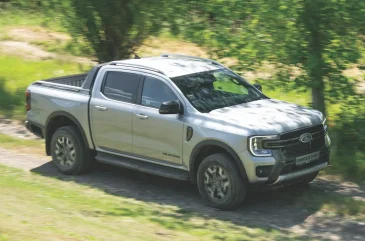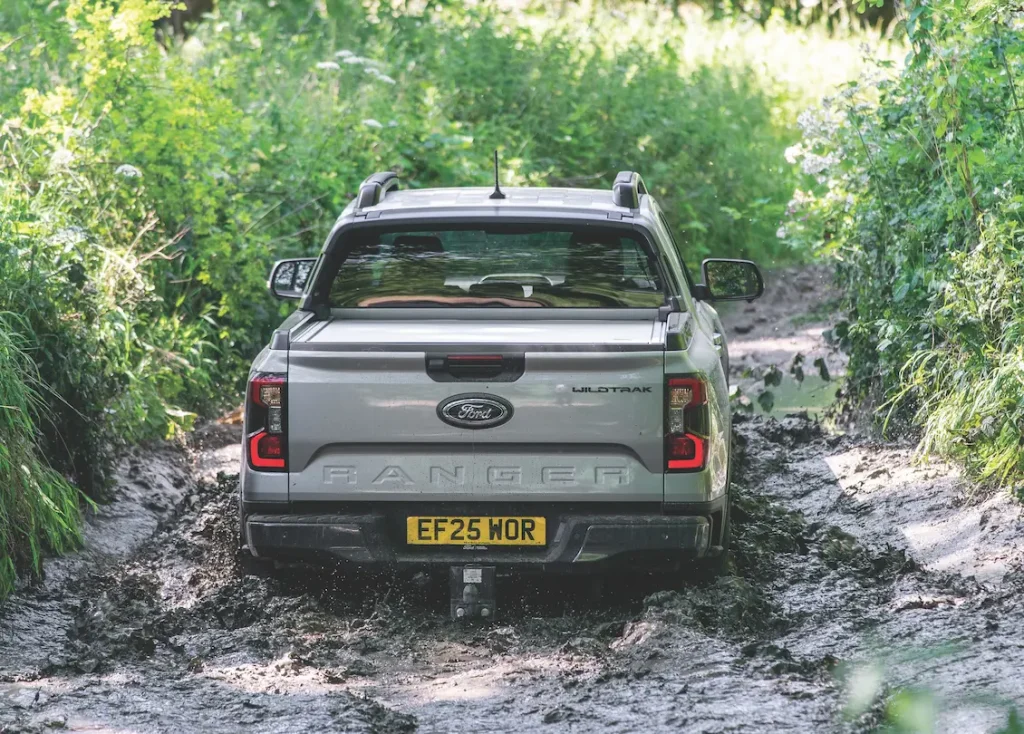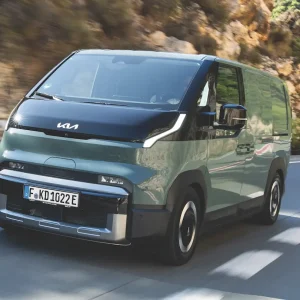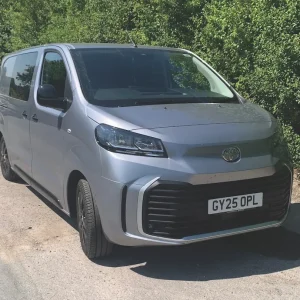
With all-electric technology yet to prove it can cope with the demands of the pick-up sector, Ford is hoping the new hybrid version of its market-leading Ranger will appeal to those who may be put off by the prohibitive tax laws the UK Government has now applied to diesel pick-up trucks.
Despite its ability to be driven 27 miles on pure electric power, as a dual-fuel vehicle, the Ranger PHEV is still liable to pay to enter clean air zones (CAZ), such as the £15 daily fee to enter the London Congestion Charge Zone. It is, however, eligible to travel into London’s Ultra-Low Emission Zone (ULEZ).
The 2.3-litre Ecoboost petrol engine that powers the Ranger PHEV is married to a 10-speed automatic gearbox and combined with a 75kW electric motor with a 11.8kWh lithium-ion battery, which can be charged in less than four hours with a single-phase 16 amp charger.
Ford has used this petrol engine in passenger cars such as the Mustang and Focus RS but it is new to the LCV line-up.
The manufacturer’s stated aim with the Ranger PHEV was to create a pick-up truck that offered no compromises in performance and workhorse capacity terms compared to its ICE siblings, and the hybrid’s stats are impressive: it delivers 280hp together with a jaw-dropping 697Nm of torque, which out muscles any other production version of the Ranger. Like diesel-powered Rangers, it can carry a 1t payload and tow a trailer weighing up to 3,500kg, an important consideration because Ford claims more than half its Ranger customers use their vehicles for towing. The PHEV is also the first Ranger to get Pro Power Onboard technology, which can harness up to 6.9kW from the onboard battery to power tools or leisure equipment.
The double-cab-only Ranger PHEV is available in three specification grades: XLT, Wildtrak and the Stormtrak launch edition, which Ford says will only be sold until the beginning of 2026.
Loading and interior
The load bed on all versions can accommodate a Euro pallet between the wheelhouses and is accessed via an Easy Lift tailgate. A cargo light makes it easier to see what’s in the back.
In the cabin, Ford’s SYNC 4A connectivity system with connected navigation and a 12in vertical touchscreen is standard on all models, as is an 8in digital instrument cluster and wireless phone charging. Standard driver assistance technologies include pre-collision assist, lane keeping aid and a rear-view camera.
The Wildtrak adds heated front seats and steering wheel plus 360° Zone Lighting for improved visibility around the vehicle at night.
Stepping up to Stormtrak brings with it a 10-speaker B&O sound system, matrix LED headlamps, 2.3 kW Pro Power Onboard (6.9kW is optional) and Ford’s Flexible Rack System for the load bed.
Performance and drive
We tested the Ranger PHEV Wildtrak and were impressed by the cut of its jib both on and off road.
Tapping into the available electric power means acceleration from a standing start on the tarmac is brisk and once out of town on open roads the petrol engine is smooth and responsive, working in tandem with the 10-speed transmission. With the Ranger’s customary good handling transferred into the PHEV and with so much power and torque to dip into, the driving experience is bettered only by that of Ford’s own Ranger Raptor.

Ford’s Modular Hybrid Transmission switches between petrol, hybrid and electric power according to the drive mode selected.
Choose EV Auto and the PHEV moves seamlessly between electric and petrol modes depending on speed and driving environment, EV Now uses electric power and is good for urban routes, EV Later preserves battery power for when you need it – so is ideal for inter-city journeys that culminate with urban driving – while EV Charge uses the petrol engine to both power the vehicle and top up the battery. This creates the noisiest and least-smooth drive, although the technology is far more sophisticated than when we first encountered it in the previous generation Transit Custom PHEV in 2020.
Off-road, the prodigious quantity of torque available effortlessly propels the truck up steep, knobbly hills while additional motor braking from the regenerative charging system helps with descent control.
To engage four-wheel-drive you rotate a dial between the front seats with four different settings, including the on-road 2H position. Selecting 4H puts you
into 4×4 mode for less severe off-road conditions and 4L gives you access to a set of low-ratio gears for tougher terrain.
In addition, 4A can be deployed to engage four-wheel-drive to negotiate slippery road surfaces. Drivers can choose from a variety of modes to suit different conditions. These are: Normal, Eco, Towing, Slippery, Mud and Sand.
Ford has also fitted a differential lock and hill descent control to provide more control in challenging off-road scenarios.
The rear frame rails have been re-engineered to house the traction battery and as a result the Ranger PHEV boasts the same class-leading wading depth of 800mm as its diesel-powered stablemates. With the PHEV weighing 300kg more than the diesel truck, Ford says its engineers have revised the suspension tuning to maximise comfort and improve performance on and off road.
| Model | Ford Ranger PHEV Wildtrak 2.3 |
| Price (ex VAT) | £45,000 (est) |
| Price range (ex VAT) | £29,216 – £50,000 (est) |
| Warranty | 3yrs/60,000mls |
| Service intervals | 2yrs/12,500mls |
| Load length | 1,564mm |
| Load width (min/max) | 1,224mm /1,560mm |
| Load bay height | 511mm |
| Gross payload | 1,000kg |
| Load volume | N/A |
| Engine size/power | 2,261cc/281hp |
| Combined fuel economy | 75mpg |
| CO2 | 72g/km |
| On sale | June 2025 |
| Key rival | Toyota Hilux mild hybrid |
| Verdict | The Ranger PHEV matches the workhorse credentials and builds on the performance and refinement of its diesel-powered siblings. |
| Score | 9/10 |





